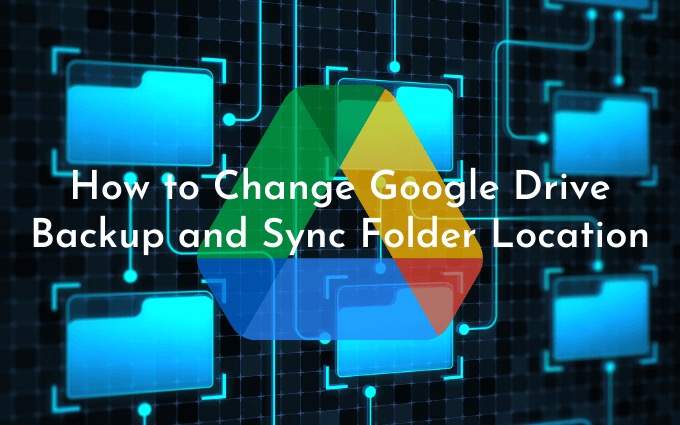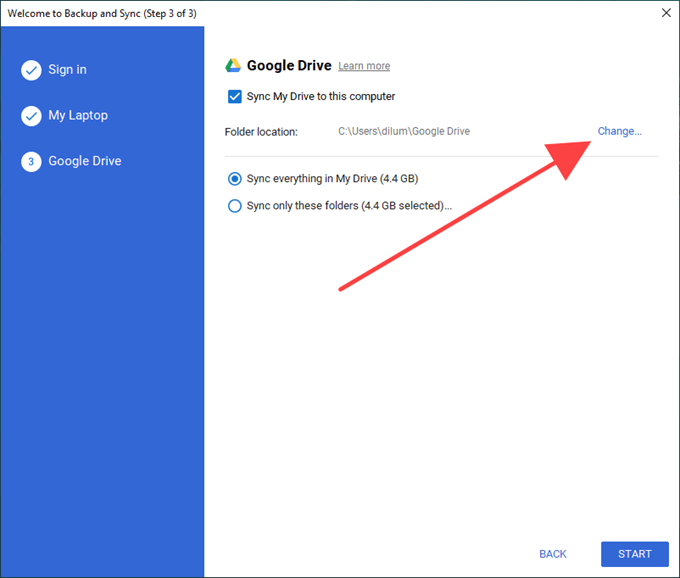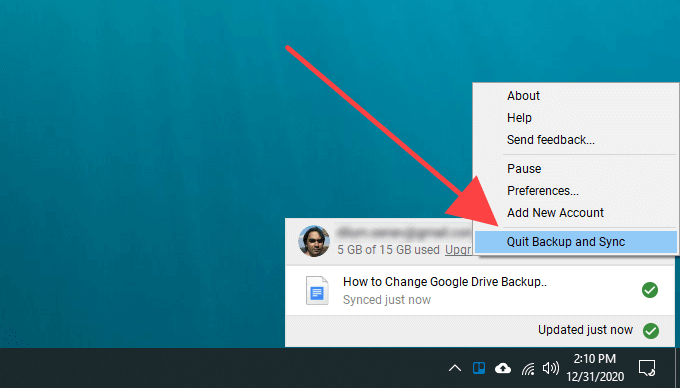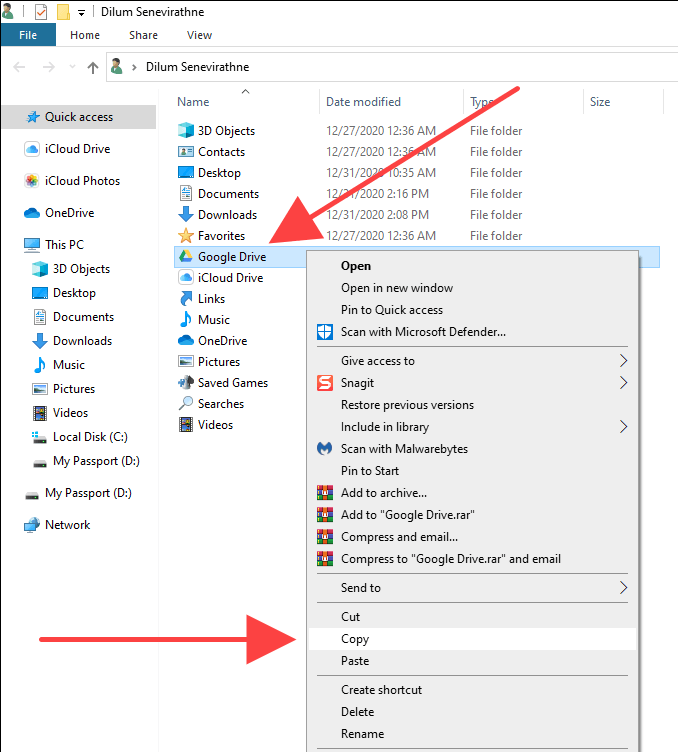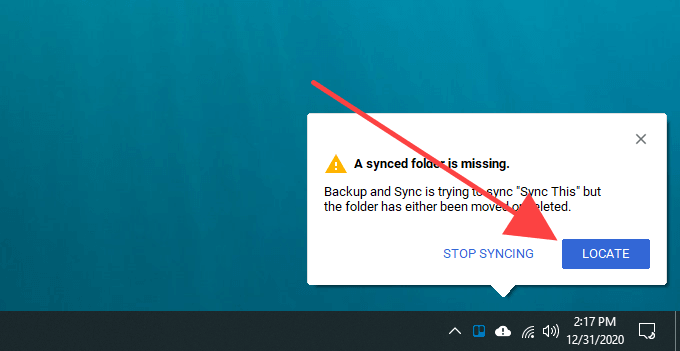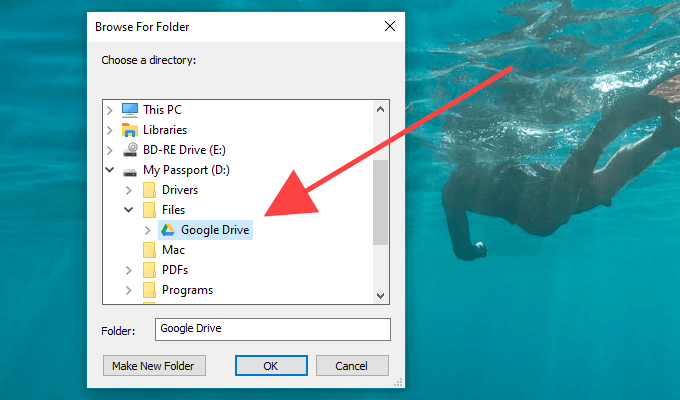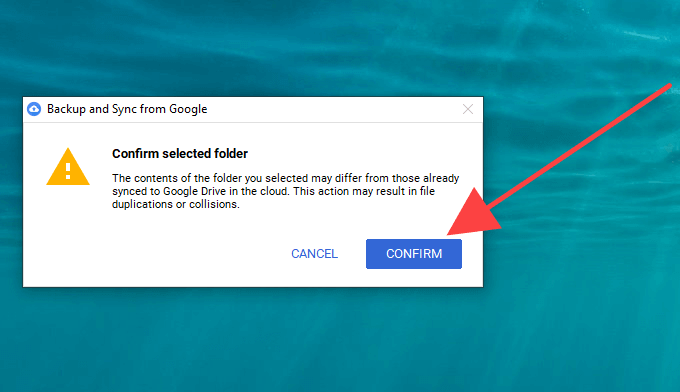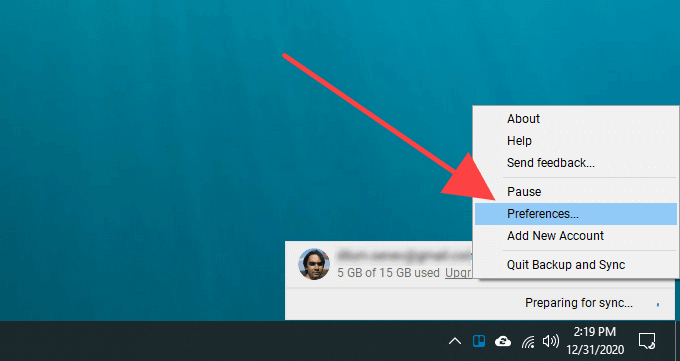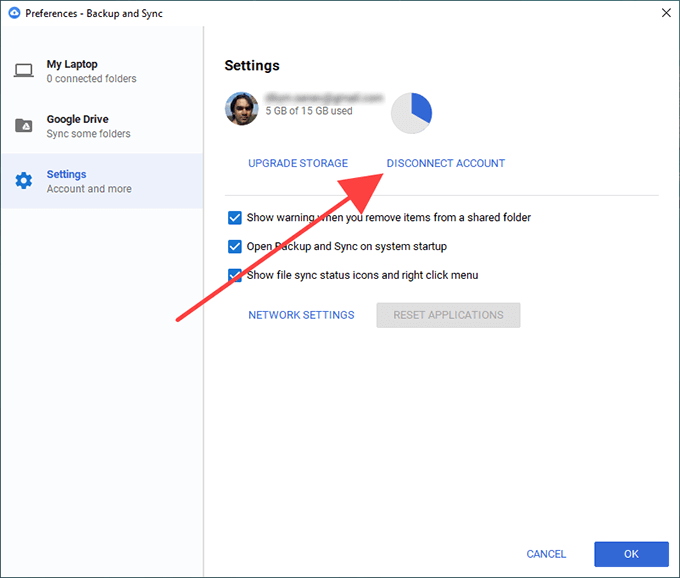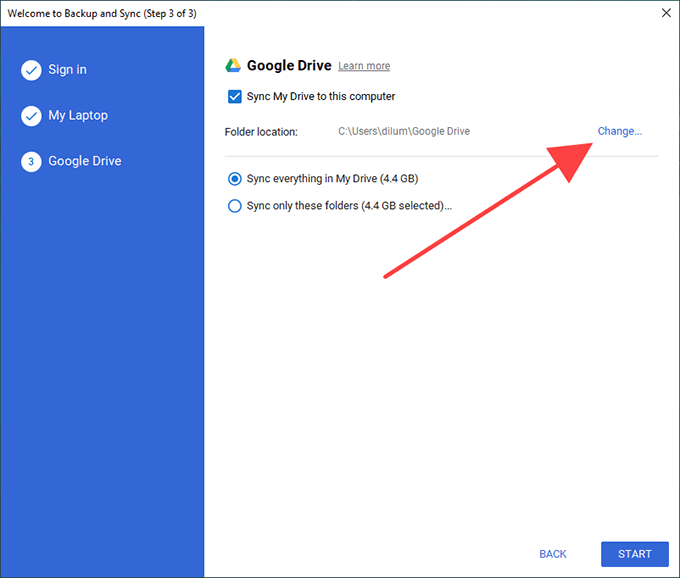Below, you’ll find three methods that you can use to change the default Google Drive Backup and Sync folder location in Windows and macOS. The first method shows how to specify a different folder location while setting up Backup and Sync on your PC or Mac. The second and third methods will show how to change the Google Drive folder if you’ve already begun to sync your Google Drive contents locally.
Method 1: Change Google Drive Folder Location During Setup
When you set up Google Drive Backup and Sync for the first time, it will attempt to set your Google Drive folder under the user account of your PC or Mac by default. To change that, simply select the Change option (listed next to Folder location) when you get to the Google Drive screen. Then, pick a different folder on your computer. Ideally, the folder should not have anything in it. Then, either choose to sync everything in Google Drive locally or select Sync only these folders and pick the items from Google Drive that you want to sync. Finally, select Start.
Method 2: Quit Backup and Sync and Relocate Google Drive Folder
The Backup and Sync client does not allow you to change the Google Drive folder location after you’ve started to sync your Google Drive contents locally. However, you can use a workaround that involves quitting the Backup and Sync client, shifting the Google Drive folder to a new location, and then re-opening the sync client and pointing out the new location. Not only is it easy to perform, but you also don’t have to waste any time or bandwidth by having to re-sync your files or folders from the very beginning.
- Select the Backup and Sync from Google icon on the system tray or menu bar. Then, open the Settings menu.
- Select Quit Backup & Sync and wait for the Backup and Sync client to shut down completely.
- Copy the Google Drive folder to the new location. If you have trouble locating the Google Drive folder, here’s how to get to it quickly: Windows: Press Windows+R to open the Run box. Then, type %userprofile% and select OK. Mac: Open Finder and select Go > Go to Folder. Then, type ~/ and select Go.
- Once you’re done copying, delete the Google Drive folder from its original location.
- Re-open the Backup and Sync client. It should ask you to locate the missing folder. Select Locate.
- Pick the Google Drive folder from the new location and select OK.
- Select Confirm. The Backup and Sync client will then compare the files within the directory to ensure that there’s nothing amiss. That usually takes a few minutes. You can then start using Google Drive normally.
Method 3: Disconnect From Google Account and Reconnect
If you’ve already started syncing your Google Drive contents to your computer but want to start all over from scratch with a different folder, you must disconnect your Google account, sign back into the Backup and Sync client, and re-configure your sync preferences. You can also choose to move any locally synced Google Drive contents to the new location and merge with them afterward. But if that’s the only thing that you want to do, then the method above is far more convenient.
- Select the Backup and Sync from Google icon on the system tray or menu bar. Then, open the Settings menu.
- Select Preferences.
- Switch to the Settings side-tab and select Disconnect Account.
- Select Disconnect to confirm. Backup and Sync will sign you out of your Google Account. It won’t delete any of your locally synced files and folders, however.
- Move the contents within the Google Drive folder into a new folder within the location that you want to switch to. Skip this step if you want to sync everything from scratch.
- Select Backup and Sync from Google from the system tray or menu bar again and select Sign in.
- Enter your Google Account credentials and set up your sync preferences. Once you get to the Google Drive tab, select Change, and pick the new location.
- Determine what you want to sync from Google Drive and select Start to begin syncing.
- If you copied any previously synced files and folders into the new location, select Continue to merge them with the rest of the contents. Note: Feel free to delete the Google Drive folder from its original location.
Switched to External Drive? Keep This in Mind
As you just learned, it’s ridiculously easy to shift the Google Drive folder to a different location. If you ended up switching to an external drive, however, just remember to keep it connected to your PC or Mac to avoid any sync issues. If you do want to remove it, make sure to exit the Backup and Sync client first. When you reconnect it again, simply re-open the sync client to continue syncing as usual. If you run into any sync issues later on, here’s how to fix Google Drive Backup and Sync. It might also be a good time to optimize your Google Drive storage.
